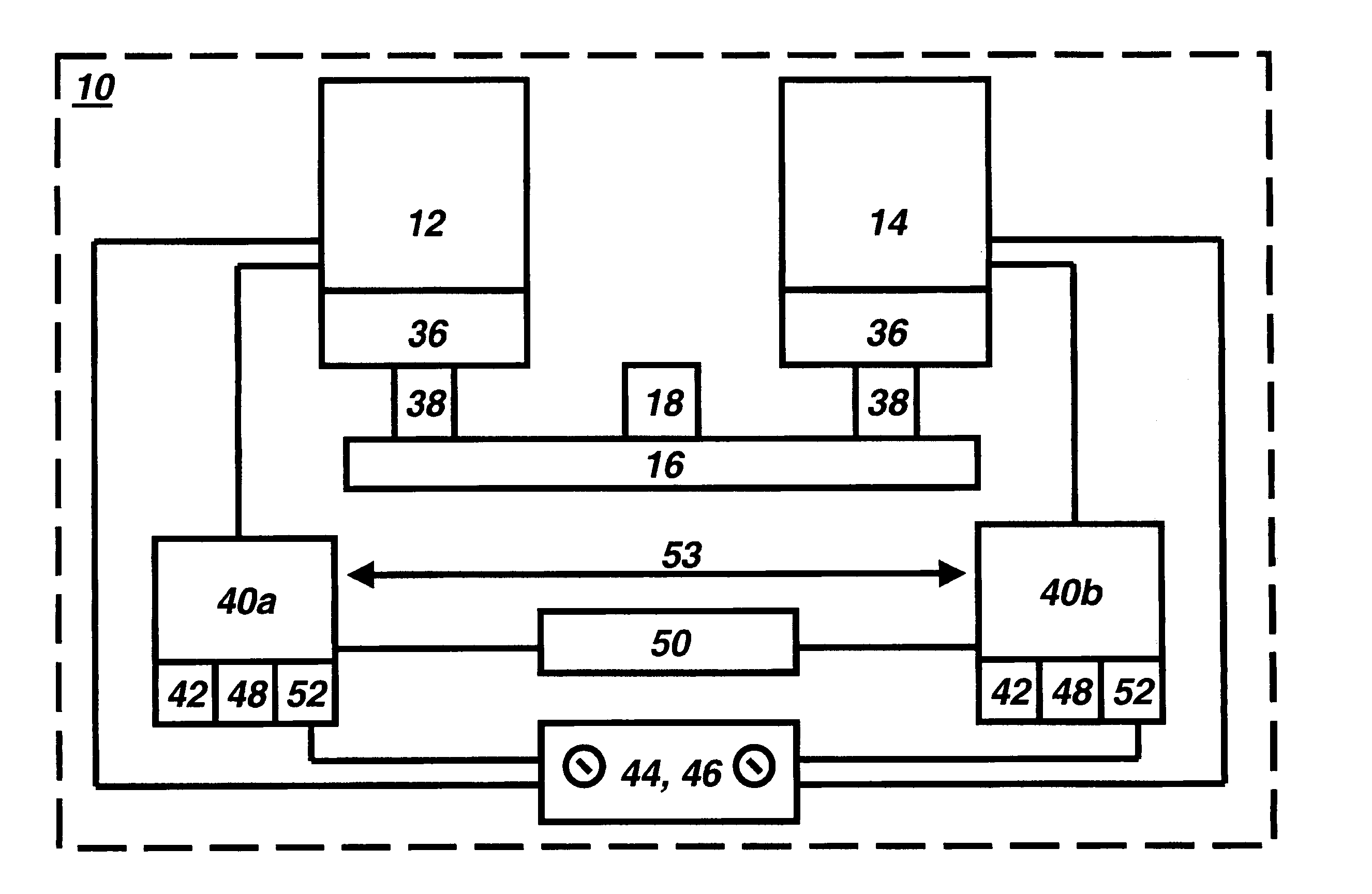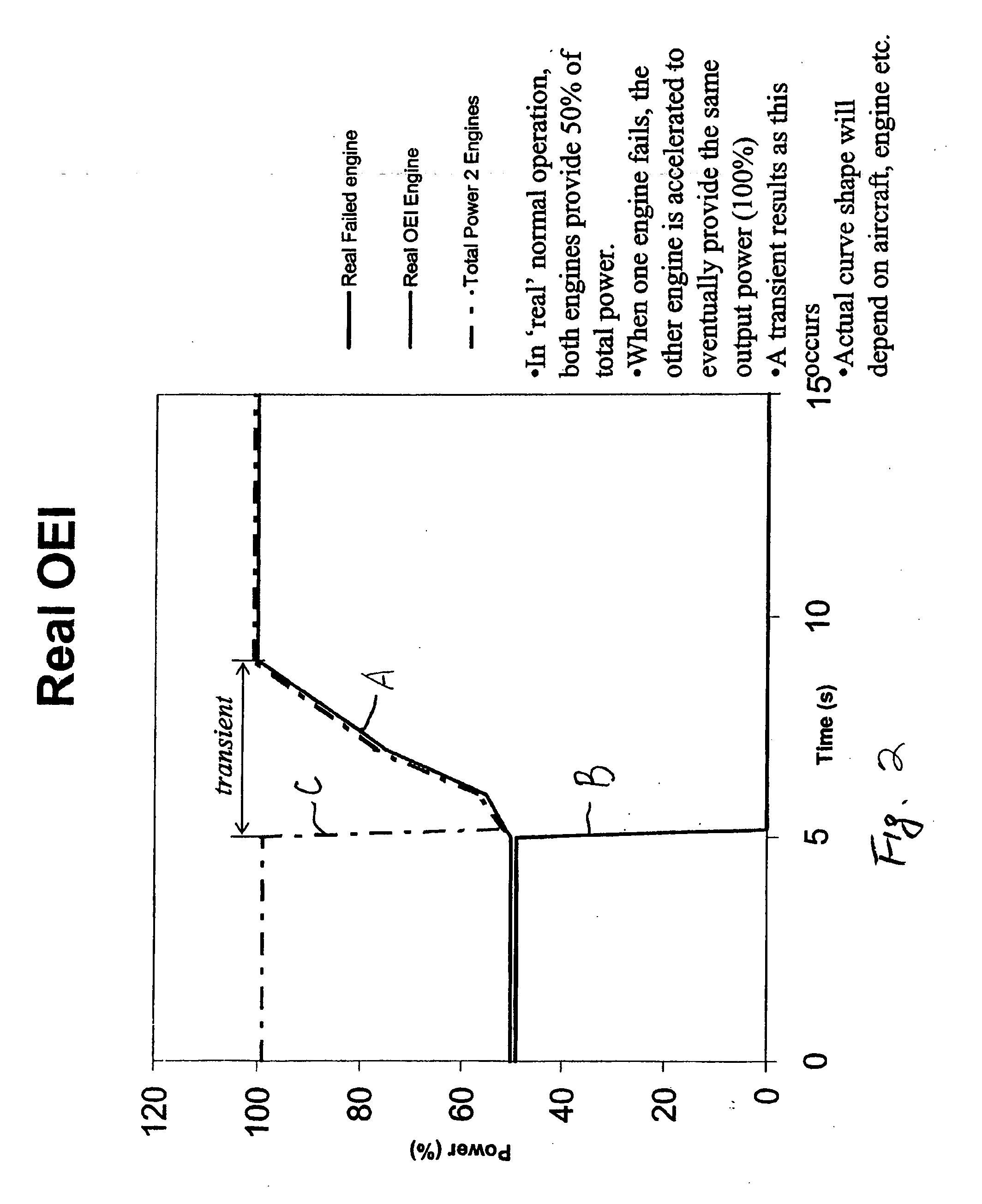One-engine-inoperative training method and system
a training method and one-engine technology, applied in the field of one-engine-in-operation training methods and systems, can solve the problems of reducing the life expectancy of certain critical components such as the turbine blade, the problems of instructors and helicopter operators, and the effect of reducing the life expectancy
- Summary
- Abstract
- Description
- Claims
- Application Information
AI Technical Summary
Benefits of technology
Problems solved by technology
Method used
Image
Examples
Embodiment Construction
[0023]FIG. 1 illustrates a twin-engine single-output power plant system for a helicopter, generally indicated at numeral 10. The twin-engine power plant system 10 includes first and second turbo shaft gas turbine engines 12 and 14 which are mechanically linked by gearbox 16, to provide a single output at the main shaft 18. It is to be understood that the single combined power output is represented by a shaft output means, including electrical, hydraulic, mechanical, etc., all driven by the combined output of the mechanically linked engines. Likewise, for a helicopter having multiple engines, the gearbox may supply shaft power to both the main rotor and the tail rotor rather than to a single shaft the output of which is then divided among the components.
[0024] Engines 12 and 14 are preferably identical. Each engine preferably has a gearbox 36 to generate engine torque output on an output shaft 38 of the gearbox 36 for transfer to gearbox 16.
[0025] The power output of a gas turbine ...
PUM
 Login to View More
Login to View More Abstract
Description
Claims
Application Information
 Login to View More
Login to View More - R&D
- Intellectual Property
- Life Sciences
- Materials
- Tech Scout
- Unparalleled Data Quality
- Higher Quality Content
- 60% Fewer Hallucinations
Browse by: Latest US Patents, China's latest patents, Technical Efficacy Thesaurus, Application Domain, Technology Topic, Popular Technical Reports.
© 2025 PatSnap. All rights reserved.Legal|Privacy policy|Modern Slavery Act Transparency Statement|Sitemap|About US| Contact US: help@patsnap.com



